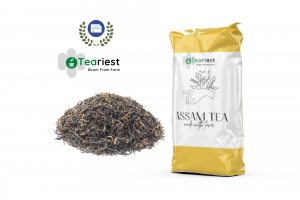
The chai culture in India is more than just a beverage; it is a way of life. The aroma of simmering spices and tea leaves filling the air is an experience that transcends beyond the cup. Chai has been an integral part of the Indian culture for centuries and continues to be a staple in households and street stalls across the country. In this blog, we will delve into the history, significance, and evolution of the chai culture in India.
The origins of chai can be traced back to the ancient spice routes of India. Traders would brew tea leaves with spices such as cinnamon, cardamom, and ginger to help them stay alert during their long journeys. Over time, this practice evolved into the tea culture we see in India today. Chai has become a symbol of hospitality and is often offered to guests as a sign of warmth and friendship. The beverage has also been a source of comfort for many, providing a warm embrace on cold mornings or a pick-me-up during long afternoons.
In India, the chai culture is intertwined with daily life. It is an integral part of the morning routine, where families gather together to enjoy a cup of tea while exchanging news and stories. Chai is also an important part of social gatherings and festivals, where the aroma of spices and tea leaves fills the air. In many parts of India, chai is also considered a status symbol, with wealthy families often employing a personal tea maker to prepare their tea.
The preparation of chai in India is a complex process that involves a mix of spices and tea leaves. Each region of India has its own unique blend of spices, which results in a distinct flavor profile. For example, in the southern states of India, chai is brewed with black pepper and cardamom, while in the northern states, the addition of ginger and cinnamon is more common. The tea leaves used in chai can also vary, with many households opting for strong tea blends such as Assam or Darjeeling tea.
The chai culture in India has evolved significantly over the years. With the rise of modern cafe chains and the popularity of tea culture worldwide, the traditional chai has been given a contemporary twist. Today, chai lattes, iced teas, and tea-based smoothies are popular in cafes across the country, providing a new and innovative way for people to enjoy this beloved beverage.
In recent years, chai has also gained popularity as a health drink, with many people using it as a natural remedy for a variety of ailments. The spices used in chai, such as cinnamon, ginger, and cardamom, have been known to have numerous health benefits, including aiding digestion, boosting the immune system, and improving heart health.
In conclusion, the chai culture in India is an intrinsic part of the country’s heritage and daily life. From its humble beginnings as a beverage for traders to its current status as a popular health drink, chai has come a long way. The aroma of spices and tea leaves, the warmth of the cup, and the comfort of a steaming brew make chai more than just a drink – it is a symbol of tradition, hospitality, and the rich cultural heritage of India.
